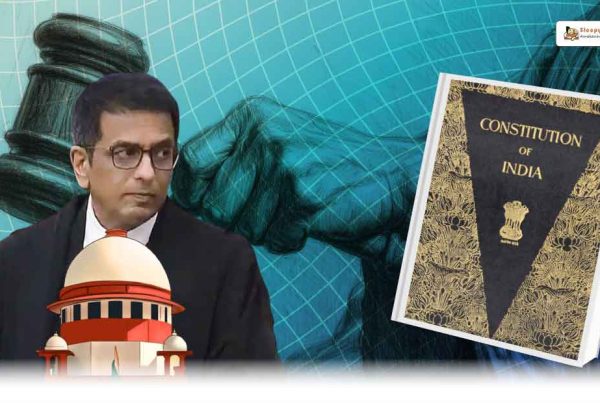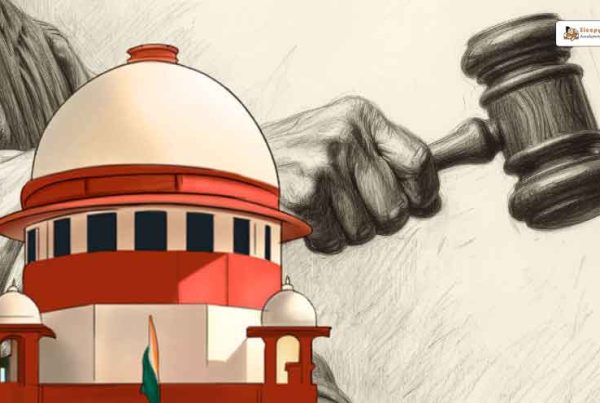The Parliament of India is a central pillar of the country’s democracy. This article provides an in-depth look at its historical evolution, structure, functions, and the challenges it faces. Aimed at UPSC aspirants, this overview will help you understand the key aspects of the Indian Parliament, making your preparation more comprehensive.
Key Takeaways
- The Indian Parliament has a rich history that includes both pre- and post-independence developments.
- It operates on a bicameral system, consisting of the Lok Sabha and Rajya Sabha.
- The Parliament has various functions, including legislative duties, financial control, and ensuring accountability.
- There are three main sessions of Parliament each year: Budget, Monsoon, and Winter sessions.
- Technological advancements like e-Parliament initiatives are making the Indian Parliament more transparent and accessible.
Historical Evolution of the Indian Parliament
Pre-Independence Legislative Developments
The roots of the Indian Parliament can be traced back to the colonial era. The British introduced several legislative reforms to involve Indians in governance. The Government of India Act of 1919, also known as the Montague-Chelmsford Reforms, was a significant step. It led to the creation of a bicameral legislature, which included the Central Legislative Assembly and the Council of State. This act also introduced the institutions of Speaker and Deputy Speaker in 1921, with Frederick Whyte and Sachidanand Sinha being the first to hold these positions.
Post-Independence Reforms
After gaining independence in 1947, India adopted a new Constitution, which came into effect on January 26, 1950. The first general elections under this Constitution were held in 1951-52, leading to the formation of the first elected Parliament in April 1952. The Indian Parliament was established as the supreme legislative body in the country, following the Westminster Model. Articles 79 to 124 in Part V of the Constitution detail the organization, composition, and functions of the Parliament.
Significant Constitutional Amendments
Over the years, several constitutional amendments have shaped the functioning of the Indian Parliament. The 42nd Amendment Act of 1976 is particularly noteworthy as it brought about extensive changes, including the curtailment of judicial review and the enhancement of the Parliament’s power. Another significant amendment is the 52nd Amendment Act of 1985, which introduced the anti-defection law to prevent political defections and ensure stability in the government.
The evolution of the Indian Parliament reflects the country’s journey from colonial rule to a vibrant democracy. Each phase of development has contributed to the robust legislative framework that governs India today.
Structure of the Indian Parliament
The Parliament of India consists of the President, the Council of States (Rajya Sabha), and the House of the People (Lok Sabha). This structure ensures a comprehensive representation of the Indian populace and states.
Bicameral System: Lok Sabha and Rajya Sabha
India follows a bicameral system, meaning it has two houses in its Parliament. The Lok Sabha, also known as the House of the People, is composed of members directly elected by the people. The Rajya Sabha, or the Council of States, consists of members elected by the legislative assemblies of the states and union territories.
Composition and Membership
The Lok Sabha can have a maximum of 552 members, including up to 20 members from the Union Territories and two members nominated by the President from the Anglo-Indian community. The Rajya Sabha, on the other hand, can have up to 250 members, with 12 members nominated by the President for their expertise in various fields such as literature, science, art, and social service.
Roles and Responsibilities
The primary role of the Parliament is to make laws. Both houses participate in the legislative process, but the Lok Sabha has more power in financial matters. The Rajya Sabha reviews and suggests changes to bills proposed by the Lok Sabha. Additionally, the Parliament holds the government accountable through various mechanisms like question hours, debates, and committees.
The Parliament of India is a vital institution that upholds the democratic framework of the country, ensuring that the voices of the people and the states are heard and represented.
Functions and Powers of the Indian Parliament
The roles, powers, and functions of the Parliament of India include a vast range of areas, encompassing lawmaking, representation, and oversight of the government. The Parliament plays a crucial role in shaping the nation’s laws and policies, ensuring that the government remains accountable to the people.
Sessions of the Indian Parliament
The Indian Parliament holds three main sessions each year. These sessions are crucial for managing the country’s legislative business. The process of calling all members to meet is known as the summoning of Parliament, and it is the President who summons each House. The gap between two sessions cannot exceed six months, ensuring that Parliament meets at least twice a year.
Legislative Process in the Indian Parliament
The legislative procedure in Parliament lies at the heart of the functioning of the Parliament as the supreme legislative body of India. A bill is a proposal for a new law or a change to an existing law. It becomes an act or law when it is passed by both Houses of Parliament and receives the President’s assent. The legislative process is the same in both the Lok Sabha and the Rajya Sabha, and every bill must pass through several stages in each House.
Introduction of Bills
Bills can be introduced by either a minister or a private member. They are classified into different types, such as ordinary bills, money bills, and constitutional amendment bills. The process begins with the first reading, where the bill is introduced and its objectives are explained.
Committee System
After the initial introduction, bills are often referred to committees for detailed examination. These committees scrutinize the bill’s provisions, suggest changes, and prepare reports. This step ensures that the bill is thoroughly reviewed before further discussion.
Presidential Assent
Once both Houses pass the bill, it is sent to the President for approval. The President can either give assent, withhold assent, or return the bill for reconsideration. Once the President gives assent, the bill becomes a law.
The legislative process ensures that every bill is carefully considered and debated, reflecting the democratic principles of the Indian Parliament.
Privileges and Immunities of Parliament Members
Parliamentary privileges are the rights and immunities enjoyed by members of Parliament (MPs) in India to enable them to discharge their duties and functions effectively. These privileges are essential for maintaining the authority, dignity, and independence of Parliament.
Freedom of Speech
MPs have the right to express their views freely within the walls of Parliament without fear of legal action. This freedom is crucial for open and honest debates on national issues. This privilege ensures that MPs can speak their minds without any external pressure.
Exemption from Arrest
During a parliamentary session, MPs are protected from arrest in civil cases. This immunity allows them to attend sessions and participate in legislative activities without interruption. However, this does not apply to criminal cases or preventive detention.
Code of Conduct
MPs are expected to adhere to a code of conduct that upholds the integrity and decorum of Parliament. This includes maintaining discipline, avoiding conflicts of interest, and acting in the public interest. The code of conduct is designed to ensure that MPs perform their duties responsibly and ethically.
The privileges and immunities granted to MPs are vital for the smooth functioning of Parliament and the democratic process. They allow MPs to perform their roles without undue interference or fear of reprisal.
Parliamentary Committees
Parliamentary committees play a crucial role in the Indian Parliament. They help in the detailed examination of various legislative and administrative issues. These committees are essential for the smooth functioning of the Parliament and ensure that the legislative process is thorough and efficient.
Comparison with Other Parliamentary Systems
UK Parliament
The UK Parliament is often seen as the mother of all parliaments. It is a bicameral system, consisting of the House of Commons and the House of Lords. The House of Commons is made up of Members of Parliament (MPs) who are elected, while the House of Lords is made up of appointed members, including life peers, bishops, and hereditary peers. The UK Parliament has a strong tradition of parliamentary sovereignty, meaning it holds supreme legal authority and can create or end any law.
US Congress
The US Congress is a bicameral legislature, consisting of the House of Representatives and the Senate. Unlike the UK and India, the US follows a presidential system where the President is separate from the legislature. Members of the House of Representatives are elected based on population, while each state has two Senators regardless of its size. This system ensures a balance of power between populous and less populous states.
Parliaments in Other Democracies
Many other democracies have their own unique parliamentary systems. For example, Germany has the Bundestag and Bundesrat, while Japan has the National Diet. These systems vary in their structure and function but share the common goal of representing the people and making laws. Some countries, like Italy, have a parliamentary system with a strong emphasis on coalition governments, which can lead to frequent changes in leadership.
Understanding the differences between these systems helps us appreciate the unique features of the Indian Parliament and its role in the world’s largest democracy.
Challenges and Issues Facing the Indian Parliament
The Parliament of India faces several challenges that impact its effectiveness. Frequent disruptions and a low number of sittings hinder meaningful debate on significant legislation. Corruption and the influence of money in politics further complicate the situation. Additionally, the presence of criminal elements in politics and a lack of internal democracy within parties are major concerns. Inadequate representation of women and the need for reforms in parliamentary procedures also impede progress.
Role of the Parliament in Indian Democracy
The Parliament of India is the cornerstone of the country’s democratic system and governance. Comprising two houses, the Lok Sabha (House of the People) and the Rajya Sabha (Council of States), the Indian Parliament plays a pivotal role in shaping and implementing legislation, representing the diverse voices of the nation, and upholding the principles of democracy. It is within these hallowed halls that elected representatives come together to debate, discuss, and decide on matters of national importance.
Technological Innovations in the Indian Parliament
The Indian Parliament has embraced various technological innovations to enhance its efficiency and transparency. These advancements aim to make parliamentary processes more accessible and accountable to the public.
E-Parliament Initiatives
The E-Parliament initiatives have revolutionized the way the Indian Parliament functions. Digital platforms have been introduced to streamline legislative processes, making it easier for members to access documents and participate in discussions. These platforms also allow for real-time updates and better management of parliamentary records.
Digital Voting Systems
Digital voting systems have been implemented to ensure accurate and swift voting during parliamentary sessions. These systems reduce the chances of errors and make the voting process more transparent. Members can now cast their votes electronically, and the results are displayed instantly, ensuring a smooth and efficient voting process.
Transparency and Accessibility
To promote transparency and accessibility, the Indian Parliament has made significant strides in making information available to the public. Parliamentary proceedings are now live-streamed, allowing citizens to stay informed about the discussions and decisions being made. Additionally, various documents and reports are accessible online, ensuring that the public can easily obtain information about parliamentary activities.
The Indian Parliament is embracing new technologies to improve its efficiency and transparency. From digital voting systems to real-time data access, these innovations are transforming how the Parliament operates. Want to learn more about these advancements? Visit our website for detailed insights and stay updated with the latest trends.
Conclusion
The Parliament of India stands as a cornerstone of the country’s democratic framework. It plays a crucial role in shaping the nation’s laws, policies, and governance. Understanding its structure, functions, and the challenges it faces is essential for anyone preparing for the UPSC exams. This knowledge not only helps in exams but also fosters a deeper appreciation of India’s political system. As future leaders and policymakers, it is important to grasp the workings of this vital institution to contribute effectively to the nation’s progress.
Frequently Asked Questions
What is the Indian Parliament?
The Indian Parliament is the supreme legislative body of India, consisting of two houses: the Lok Sabha (House of the People) and the Rajya Sabha (Council of States).
How is the Indian Parliament structured?
The Indian Parliament has a bicameral structure, meaning it has two houses: the Lok Sabha and the Rajya Sabha. The Lok Sabha members are directly elected by the people, while the Rajya Sabha members are elected by the elected members of State Legislative Assemblies.
What are the main functions of the Indian Parliament?
The main functions of the Indian Parliament include making laws, controlling finances, and ensuring the accountability of the government through various oversight mechanisms.
What are the different sessions of the Indian Parliament?
The Indian Parliament holds three sessions each year: the Budget Session, the Monsoon Session, and the Winter Session. Each session has a specific agenda and duration.
How does a bill become a law in the Indian Parliament?
A bill goes through several stages to become a law: it is introduced, debated, and voted on in both houses of Parliament. If approved, it is sent to the President for assent. Once the President signs it, the bill becomes a law.
What are the privileges of members of the Indian Parliament?
Members of the Indian Parliament have certain privileges, including freedom of speech within the house, exemption from arrest in civil cases during the session, and other protections to ensure they can perform their duties without interference.
What is the role of parliamentary committees?
Parliamentary committees are smaller groups of members who focus on specific areas like finance, defense, or health. They examine bills, budgets, and policies in detail and provide recommendations to the Parliament.
What are some challenges faced by the Indian Parliament?
Some challenges include frequent disruptions and deadlocks, issues of representation and inclusivity, and concerns about ethics and corruption among members.





